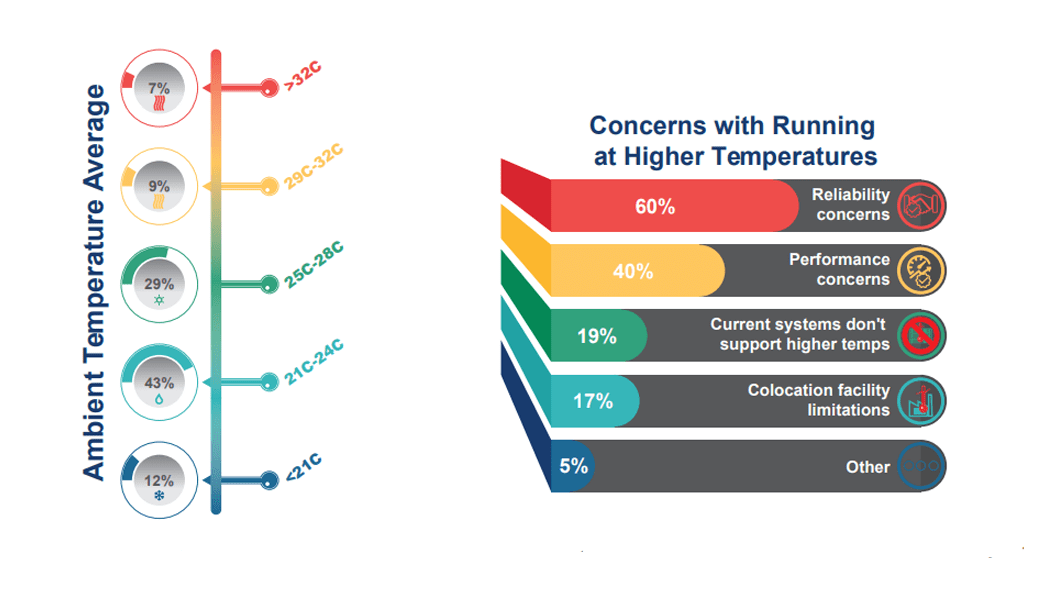Datacenters have become a key partner for enterprises, instead of just being an external service used to store data and business operation models. Even a small issue in datacenter operations can impact the business.
Today, the datacenters are lifeblood for every business, but they also impact the world. Around 3% of the total electricity around the world is consumed by datacenters, which is more than the entire power consumption of the UK. Further, these account for 2% of the global greenhouse gas emissions, and 2% electronic waste (e-waste).
According to “Data Centers and the Environment” report by Super Micro Computer, 43% of organizations don’t have an environmental policy, and 50% of them don’t have any plan to develop such a policy anytime soon. The reasons for not having environmental policy are high costs (29%), lack of resources or understanding (27%), while 14% don’t consider environmental issues a priority.
With this report, Super Micro Computer aims to help datacenter managers better understand the environmental impact of datacenters, provide quantitative comparisons of other companies, and eventually help them reduce this impact.
Key findings of the “Data Centers and the Environment” report:
-
28% businesses consider environmental issues while selecting datacenter technology
While setting a datacenter strategy, the IT decision makers consider security, performance, and connectivity the top priorities. Energy efficiency ranked 4th, where only 9% companies considered this as the top priority.
However, while executing the actual datacenter design, 59% of companies consider power efficiency as ‘extremely important’ or ‘important’.
Also read: Why are datacenters so severe and vulnerable to outages?
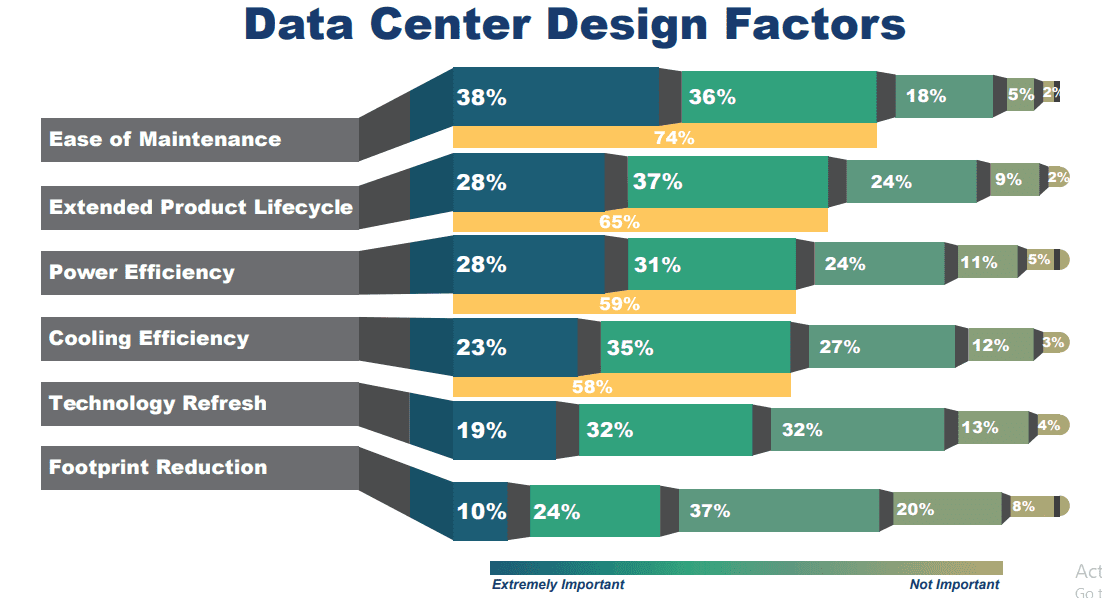
-
Average datacenter PUE is 1.89
Power Usage Effectiveness (PUE) is the ratio of energy consumed by datacenter to the energy delivered to IT equipment. According to US Department of Energy, the average datacenter PUE is approx. 1.6. But IDC indicates that over two-thirds of enterprise datacenters in the US have a PUE over 2.03.
Around 58% of companies are not aware of their datacenter PUE. Of the companies that measure PUE, 22% reported an average PUE of 2.0 or above, whereas 6% reported an average range between 1.0 and 1.19.
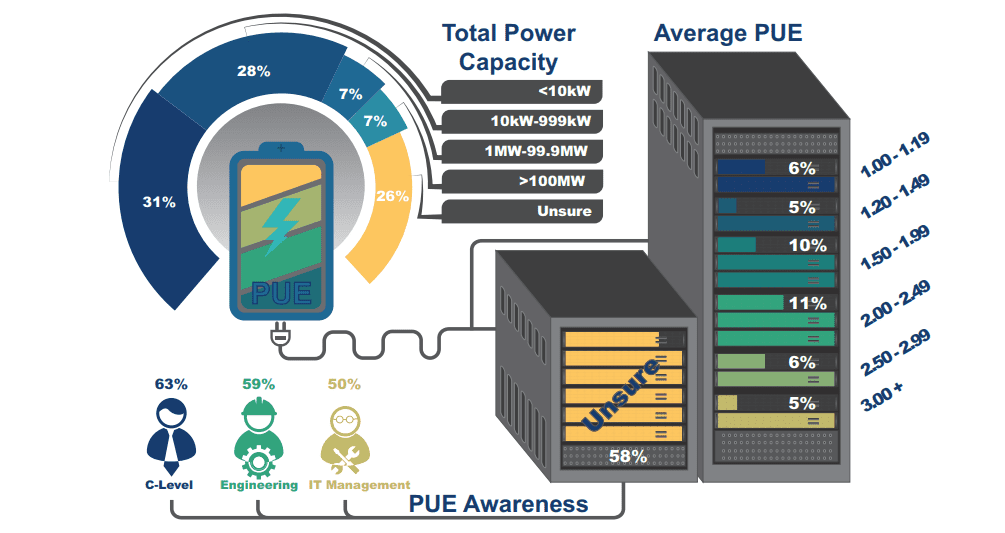
-
Average datacenter temperature is 24.6o C
Companies often run datacenters at higher temperatures to reduce strain on HVAC systems and save on energy consumption and related costs. The temperature of 43% of the datacenters range between 21oC and 24oC.
When it comes to running datacenters at higher temperatures, companies count reliability and performance as the main concerns. But, the recent advancements in server technology allow companies to optimize thermal designs and use free-air cooling. With this, they can run datacenters at ambient temperatures up to 40oC, without impacting the reliability and performance. It helps in improving PUE and saving costs.
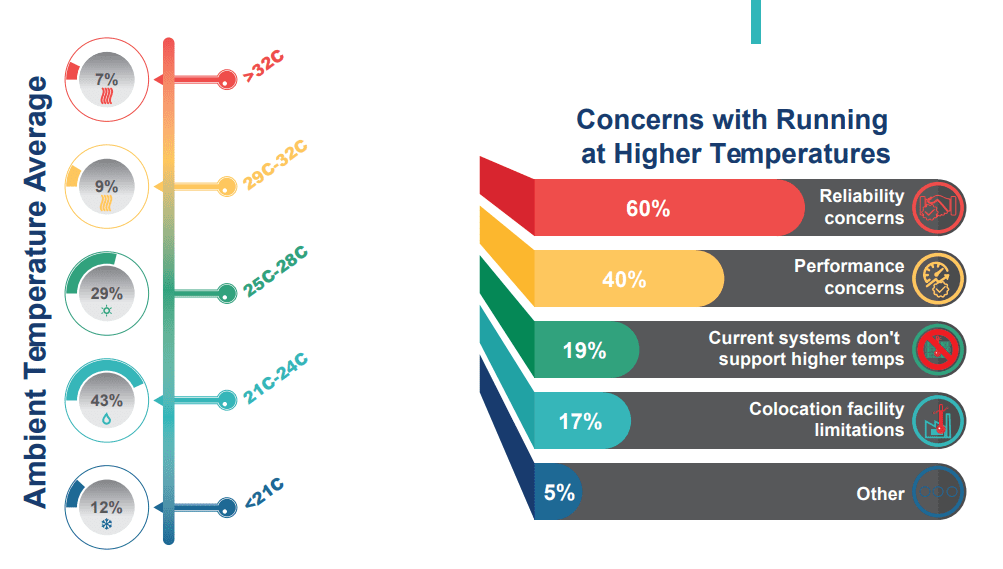
Suggested reading: Why immersion cooling is imminent to power the next generation datacenters?
-
Three-quarters of datacenters refresh their systems within 5 years
The energy consumption of datacenters can be optimized by regularly updating the systems and adding modern technologies that consume low power.
On average, around 47% of datacenters refresh their systems within three years, while 28% do it every 4-5 years. Larger companies are more likely to refresh systems every year, as compared to SMBs.
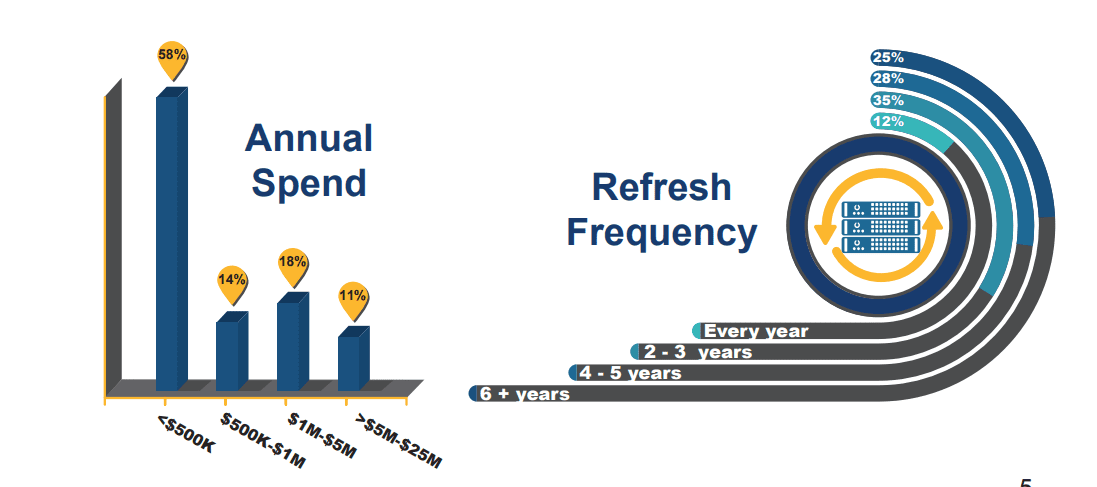
-
Datacenter E-Waste expected to increase 8% each year
When datacenters dispose of server, storage, and networking equipment, the E-Waste is created. Around 20 to 50 million electric tons of E-Waste is disposed every year around the world. This E-Waste deposits heavy metals and other hazardous waste into landfills. If companies don’t become aware of this and take necessary measures, E-Waste will increase 8% each year.
Several companies partner with recycling companies to dispose of E-Waste, while others repurpose hardware at their business, or resell the hardware.
12% of companies don’t have any systems for recycling, which increases the E-Waste. The reasons behind not recycling included time-consuming or costly process, difficulties in finding right partner, and lack of proper planning for E-Waste management.
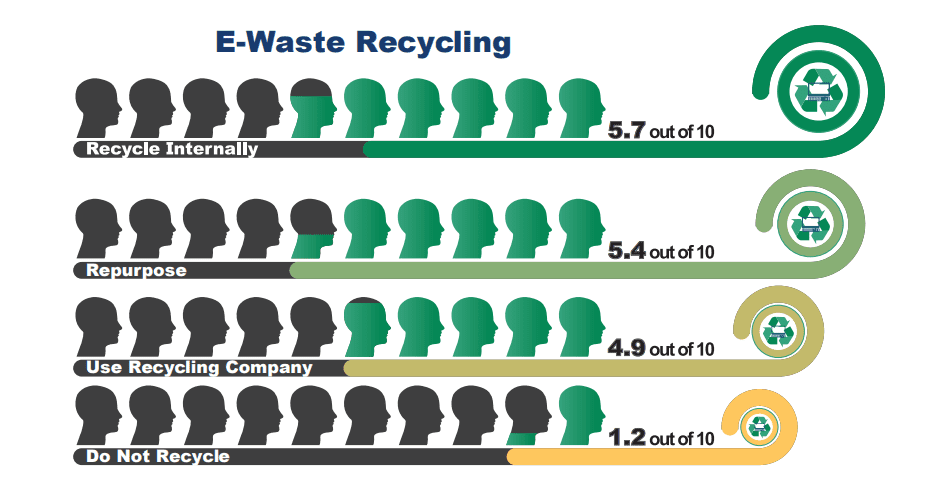
Suggested reading: Top 10 best data center service providers in India 2019
The positive part is that companies are increasingly embracing policies to address environmental issues. As per the report, around 58% of companies already have environmental policy in place or are developing it.
To learn more about Data Centers and the Environment report, click here.
Images source: Super Micro Computer



